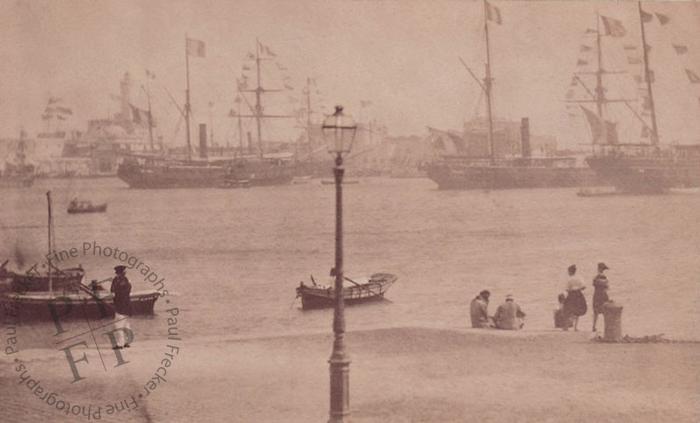Algeria
September 1860
In September 1860 Emperor Napoléon and the Empress Eugénie made a short trip to Algeria. The Imperial couple went first to Marseilles, then Toulon, and then on to Nice. From there they sailed to Ajaccio in Corsica, where they saw the house in which the first Napoléon was born, before leaving for Algeria on 15 September 1860. In Algiers they stayed in the beautiful Moorish palace built by Hasan Pasha in the sixteenth century. Various ceremonies and receptions had been arranged for the visit. The Empress laid the foundation stone of the new Boulevard de l’Impératrice, which was to run along the seafront, then accompanied the Emperor to a gathering of Arab tribesmen on the great Metija Plain. ‘Ten thousand Arab horsemen and twelve squadrons of Spahis galloped across the plain firing their rifles, after which there was a hunt of gazelles, ostriches and falcons, and a ceremony at which a long line of Goums from the desert rode up to the Emperor’s tent, and, dismounting, made their obeisance to him and to the Empress. According to General Fleury, the tribesmen did not disguise their admiration for her beauty, and she enjoyed this. In the evening Louis Napoleon attended a great ball given by the city authorities. Eugénie did not go [...] but next day, on 19 September, she attended a military review of French troops at which the Bey of Tunis was present’ [Napoleon III and Eugénie by Jasper Ridley, 1979].
The couple left Algiers at midnight on the 19th, and shortly before the ship reached Marseilles, the Emperor broke the news to Eugénie that he had been informed the previous day that her beloved sister, Paca, had died in Paris during the night of the 16th. According to General Fleury, writing twenty-four years later, the Emperor had known of Paca’s death throughout the sixty hours’ stay in Algiers and had withheld the information from his wife, for fear that her grief would prevent her carrying out her official duties, but in fact, the underwater cable between Toulon and Algiers was broken, and the news had taken more than forty-eight hours to reach Algiers from Paris. However, it is true that Louis Napoléon had delayed breaking the sad news at least for a while, and the delay was long enough to anger Eugénie, and there is no doubt that afterwards she resented this.
It seems that Disdéri was a member of the suite that accompanied the Emperor and Empress, for shortly after the visit he issued a series of some 240 cartes-de-visite showing Algerian views and subjects. The last section of his catalogue Number 5, dated 15 March 1861, is titled ‘Algérie – epreuves format carte.’ This three-page section gives 51 different titles, but some of these refer to multiple images and are numbered accordingly (e.g. ‘128-129-150-151-132: Marché arabe, place d’Isly’), there are many gaps and some numbers are given more than once. The lowest number given is 40 and the highest number given is 244.
There is little doubt that the photographs were taken at the time of the Imperial visit to Algiers, since numbers 107 and 155 in the series are both titled ‘Les autorités attendant le débarquement de Leurs Majestés’ and number 154 shows the ‘Débarquement de Leurs Majestés.’ Several other titles refer to the visit, including numbers 161 and 162, titled ‘Douar de Kabyles campés dans le plaine de Métidja’, and number 179, titled ‘Madame Levert distribuant aux Arabes les presents de S.M. la Impératrice.’

